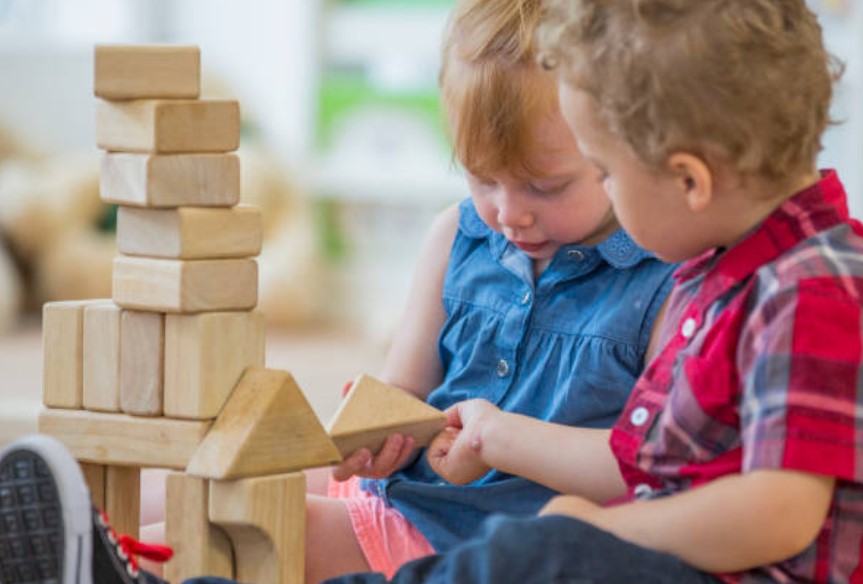Montessori toys are designed to foster independence, creativity, and hands-on learning. While high-quality Montessori toys are available for purchase, you can also create simple yet effective Montessori-inspired toys at home using everyday household materials. Here are some easy DIY projects to try:

1. Sensory Bottles
Materials Needed:
-
Empty plastic bottles
-
Water
-
Food coloring
-
Glitter, beads, or small objects
Instructions:
-
Fill the bottle with water, leaving some space at the top.
-
Add a few drops of food coloring.
-
Drop in glitter, beads, or small objects.
-
Secure the lid tightly (use glue if needed to prevent leaks).
-
Let your child shake and observe the movement of objects inside the bottle.

2. Threading Beads Activity
Materials Needed:
-
Large wooden beads or pasta with big holes
-
A shoelace or thick string
Instructions:
-
Tie a knot at one end of the string.
-
Show your child how to thread the beads onto the string.
-
This activity helps develop fine motor skills and hand-eye coordination.

3. Texture Boards
Materials Needed:
-
A sturdy cardboard piece or wooden board
-
Different textured materials (sandpaper, fabric, cotton, felt, bubble wrap)
-
Glue
Instructions:
-
Cut different textured materials into small squares.
-
Glue them onto the board in separate sections.
-
Allow your child to explore the textures by touching and describing them.

4. Discovery Basket
Materials Needed:
-
A small basket or box
-
A collection of safe household objects (wooden spoon, fabric scraps, measuring cups, etc.)
Instructions:
-
Fill the basket with a variety of objects that have different textures, weights, and shapes.
-
Allow your child to explore freely under supervision.
-
This open-ended activity stimulates curiosity and sensory learning.

The Role of Montessori Toys in Encouraging Independent Play
Independent play is a cornerstone of Montessori education, allowing children to explore their environment and learn at their own pace. Montessori toys play a crucial role in fostering this independence by being simple, purposeful, and designed to engage a child’s natural curiosity.

How Montessori Toys Encourage Independent Play
-
Self-Correcting Design
-
Many Montessori toys, such as puzzles and stacking toys, are self-correcting, meaning children can identify and fix their mistakes without adult intervention.
-
-
Promote Problem-Solving
-
Open-ended toys like wooden blocks and shape sorters encourage children to experiment and figure things out on their own.
-
-
Encourage Hands-On Learning
-
Montessori toys engage multiple senses, allowing children to touch, feel, and manipulate objects, fostering a deeper understanding of concepts.
-
-
Develop Focus and Concentration
-
Activities like threading beads or arranging objects in order require concentration, helping children develop patience and persistence.
-
-
Encourage Real-Life Skills
-
Montessori materials often mimic real-life tools (e.g., child-sized kitchen sets, cleaning tools), helping children practice everyday skills independently.
-

Best Montessori Toys for Independent Play
- Wooden puzzles
- Stacking cups
- Shape sorters
- Building blocks
- Practical life toys (child-sized brooms, cooking sets)
By incorporating Montessori toys and DIY activities, you can create an enriching environment that nurtures independence and a love for learning.

